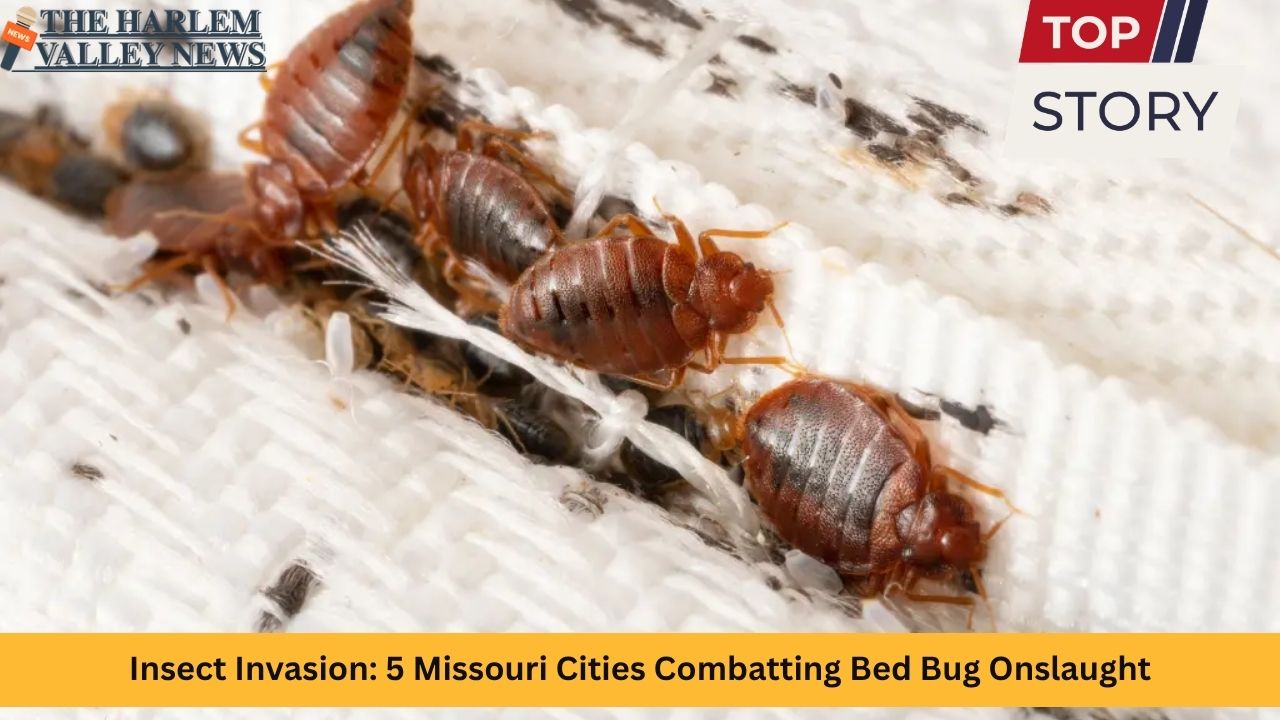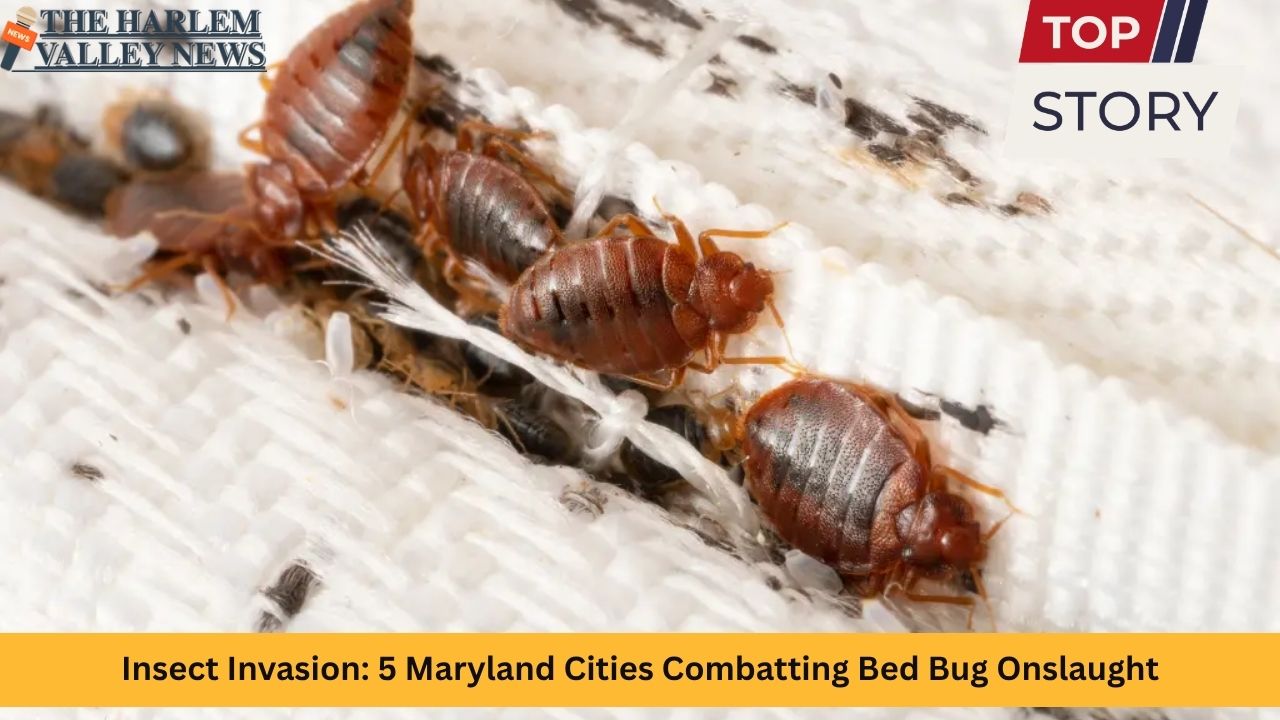Bed bugs, those elusive, blood-sucking pests, have silently proliferated across Missouri, leaving a trail of uncomfortable nights, strained economies, and stressed communities in their wake. What began as sporadic reports a decade ago has burgeoned into a full-fledged insect invasion, gripping both major urban centers and smaller towns. Missouri’s unique blend of seasonal climates, bustling cities, transient populations, and interstate travel corridors has helped create the perfect storm for bed bug infestations.
This comprehensive analysis delves into how five prominent Missouri cities—St. Louis, Kansas City, Springfield, Columbia, and Jefferson City—are grappling with the relentless advance of bed bugs. It explores the statistics, the localized challenges, the innovative responses, and the way forward for a state facing a persistent parasite.
Understanding Bed Bugs: The Silent Invaders
Bed bugs, scientifically referred to as Cimex lectularius, are tiny, nocturnal insects that feed on the blood of humans and animals. They are often about the size of an apple seed, making them difficult to spot. Their bites can cause itchy welts, allergic reactions, and, most significantly, psychological distress and insomnia in affected populations.
These insects are known for their resilience. They can survive for months without feeding, easily hitch rides on luggage, clothing, and furniture, and are highly adaptable to urban environments.
Why Missouri? The Perfect Storm for an Infestation
Missouri’s geography, dense urban areas, climate variations, and status as a Midwest travel hub increase the likelihood of bed bug problems:
-
Climate: Hot, humid summers contribute to accelerated breeding cycles.
-
Population Flux: Cities with universities, tourist attractions, and conventions see frequent movement of people.
-
Urban Density: Clusters of apartments, hotels, and public housing allow easy transmission.
Understanding the local nuances can help shed light on why certain Missouri cities have become hotspots and how each is responding to this ongoing public health concern.
Spotlight on St. Louis: The Midwest’s Bed Bug Battleground
The Epicenter of Missouri’s Bed Bug Crisis
St. Louis has routinely ranked among the top 20 bed bug-infested cities in the United States. According to professional pest control data, St. Louis placed as high as 19th nationwide for bed bug treatments in recent years—climbing in the national rankings even as other Midwest cities, like Chicago, lead the pack.
Why Is St. Louis So Hard Hit?
-
High Population Density: Large swaths of apartment complexes and multi-family housing make it easy for bed bugs to migrate across units.
-
Tourism and Travel: Conferences, sporting events, and a steady influx of visitors may introduce fresh infestations.
-
Socioeconomic Factors: Urban poverty and housing insecurity make consistent pest control challenging.
-
Frequent Secondhand Purchases: Increased reliance on thrift stores and secondhand furniture heightens risk.
Strategies and Community Action
-
Integrated Pest Management (IPM): The city promotes a combination of heat treatments, chemical control, and non-chemical methods for lasting results.
-
Public Education Campaigns: St. Louis invests in educating landlords, tenants, and hotel operators about early detection, bedding encasements, and travel precautions.
-
Secondhand Item Screening: Local authorities warn against uninspected secondhand goods and offer guides on checking for telltale signs of infestation.
Kansas City: Fighting Back on the Front Lines
The Western Gateway’s Response
Kansas City, Missouri’s largest metropolitan area, consistently appears on national lists of bed bug problem spots. Factors fueling infestations include:
-
Interstate Crossroads: As a key travel hub, the city sees persistent introductions of the pest.
-
Rapid Uptake in Urban Areas: Densely packed neighborhoods and transient populations compound the issue.
-
Hospitality Sector Challenges: The city’s vibrant hospitality and convention businesses face constant vigilance, with regular inspections of hotels, motels, and public transport hubs.
Local Innovations
-
Canine Detection Units: Kansas City pest controllers employ trained dogs for early-stage detection in schools and hotels, improving response times and reducing outbreak scale.
-
Mobile Awareness Clinics: Public health departments send mobile teams into neighborhoods most at risk, providing free information, on-site inspections, and referral to certified pest control.
-
Tenant-Landlord Partnerships: Collaborative programs encourage faster reporting, problem-solving, and joint responsibility for remediation costs.
Springfield: Small City, Big Battle
Rising Tide in Southwest Missouri
Springfield, known for its family-friendly atmosphere and thriving college scene, is no stranger to bed bugs. As the third-largest city in Missouri, it has seen increasing infestation rates over recent years, particularly in housing near Missouri State University and popular motels near the highway.
Contributing Factors
-
Student Mobility: With a large student population moving in and out of dormitories and rentals, the risk of bed bug introductions skyrockets every semester.
-
Travel Corridors: Interstate 44 brings in visitors and transient populations, increasing risk in hotels and short-term rentals.
-
Economic Realities: Lower incomes among some residents lead to delays in reporting or inability to afford professional remediation.
Unique Tactics
-
University-Driven Initiatives: Missouri State University runs targeted bed bug training for campus housing staff, moves to heat-based remediation strategies, and educates students on “what not to bring” in secondhand goods.
-
Hotel Partnerships: Local lodging providers participate in a voluntary certification program requiring regular professional inspections.
Columbia: Universities, Apartments, and a Persistent Threat
The College Town Challenge
Home to the University of Missouri, Columbia combines bustling student housing, thriving arts scenes, and seasonal visitors. This environment provides a steady stream of susceptible sites:
-
Apartment Living: Frequent tenant turnover in student apartments is a leading vector for infestation.
-
Ignorance and Stigma: Young renters often hesitate to report issues for fear of blame or lease termination.
-
Event-Driven Surges: Graduation weekends, sports tournaments, and summer camps increase hotel and dorm occupancy, boosting potential for outbreaks.
Prevention and Control
-
Education Campaigns: Mizzou collaborates with local housing authorities to distribute materials warning students to inspect belongings, beds, and even backpacks for telltale signs of pests.
-
Community Response Teams: Rapid response units are on call to assist landlords and tenants in safely containing and eliminating outbreaks.
-
Move-In/Move-Out Awareness: Leasing offices provide guidelines on proper inspection and ask tenants to immediately report concerns.
Jefferson City: Government Hub, Vulnerable Population
An Unexpected Battleground
As the state capital and administrative center, Jefferson City is not immune to the bed bug problem. Though smaller in population, it faces unique risks:
-
Government Buildings: High public traffic in offices, libraries, and courthouses leads to rare but notable outbreaks.
-
Public Housing: Many low-income housing developments struggle with recurring infestations, compounded by funding and resource limitations.
-
Travel Stress: Relocation of state employees, combined with regular tourists exploring the capital’s historic sites, means persistent introductions.
Community-Wide Interventions
-
Interagency Cooperation: Government offices share protocols so incidents in public buildings are managed quickly and confidentially, minimizing disruption.
-
Outreach in Public Housing: City authorities invest in resident education, rapid-response pest control, and the use of bed bug detection monitors in vulnerable units.
The Science and Scale: Bed Bug Facts and Missouri Stats
Bed Bug Biology at a Glance
-
Feeds Once a Week: These pests emerge mostly at night and can survive up to six months without feeding.
-
Rapid Reproduction: A single female lays hundreds of eggs in her lifespan, allowing infestations to expand rapidly.
-
Resistance Issue: Many populations are now resistant to traditional pesticides, making professional intervention essential.
Hard Numbers
-
Urban Centers Most Affected: In major cities like St. Louis and Kansas City, pest control professionals handle thousands of bed bug cases annually.
-
Hotel Industry Costs: Missouri’s hospitality sector reports significant annual spending on reactive treatments, routine inspections, and guest reimbursement.
-
Public Awareness: Local surveys indicate that more than half of Missouri residents list bed bugs among their top three pest concerns.
Key Signs and Symptoms of Infestation
Recognizing a bed bug infestation swiftly is crucial for minimizing their spread. Common signs include:
-
Itchy, Red Bites: Usually clustered, found on exposed skin after sleep.
-
Rust-Colored Stains: Dark spots (bed bug excrement) or blood spots on bedding.
-
Shed Skins and Eggs: Cast-off shells and tiny white eggs in crevices and mattress seams.
-
Musty Odor: A sweet, damp smell in rooms with larger infestations.
-
Live Bugs: Small, reddish-brown, and oval-shaped insects visible around mattress tufts or in furniture cracks.
How Missouri Is Adapting: Tactics and Best Practices
Modern Bed Bug Combat Tactics
Missouri’s cities utilize a patchwork of professional and do-it-yourself responses. Some of the most effective methods include:
-
Heat Treatments: Raising infested areas to 125-140°F, which kills all life stages.
-
Biological and Chemical Treatments: Use of safer, targeted pesticidal strategies.
-
Encasement: Installing special bed bug-proof covers on mattresses and box springs.
-
Decluttering and Cleaning: Reducing places for bugs to hide, frequent vacuuming, and routine high-heat laundering of linens.
-
Active Monitoring: Placement of bed bug detection devices in high-risk areas.
Integrated Pest Management (IPM)
The Missouri Department of Health recommends IPM, combining chemical and non-chemical solutions, regular monitoring, public education, and periodic professional reassessment for long-term success.
The Economic and Psychological Toll
While bed bugs are not known to transmit diseases, their impact is severe:
-
Costs for Households: Extermination can run into hundreds or even thousands of dollars for persistent cases.
-
Business Disruption: Hotels, cinemas, and even hospitals incur costs from lost business, reputational harm, and government fines.
-
Emotional Distress: Residents report anxiety, sleeplessness, and embarrassment, often leading to social isolation or missed work and school days.
Missouri’s Path Forward: Innovation and Hope
New Technologies and Partnerships
-
K-9 Inspections: Dogs are now a frontline defense, providing faster and more accurate identification.
-
Thermal Remediation: Advances in mobile heat-generation technologies reduce the need for chemical pesticides.
-
Public Health Networks: Cities collaborate with universities, health departments, and pest management professionals for coordinated responses.
Policy and Advocacy
-
Statewide Reporting: Improved electronic tracking enables early outbreak detection and trend mapping.
-
Support for Low-Income Households: Subsidized services and grants help the most at-risk populations access professional help.
-
Educational Resources: Online portals, workshops, and printed guides target everyone from hotel managers to tenants in subsidized housing.
Expert Tips: Protecting Yourself and Your Family
-
Always inspect hotel rooms for signs of infestation, focusing on mattresses, headboards, and upholstered furniture.
-
Avoid placing luggage on beds or soft surfaces; use luggage racks.
-
Upon returning home, place all clothing and fabric items in the dryer on high heat.
-
Examine secondhand furniture thoroughly before bringing it home.
-
Reduce clutter in your living space to minimize hiding places.
-
If you spot bed bugs, act quickly: contact a licensed pest management company for an inspection.
Conclusion
Bed bugs present a formidable challenge for Missouri’s cities, blending into the fabric of daily life and resisting easy solutions. However, through scientific understanding, strategic intervention, and community-wide action, Missouri is gradually turning the tide. The experiences of St. Louis, Kansas City, Springfield, Columbia, and Jefferson City illustrate not just the scale of the problem, but the resilience, creativity, and determination necessary to combat it.
As the fight continues, public vigilance and responsible policies will remain essential. With innovation, cooperation, and persistence, Missouri’s residents can look forward to not just coping with bed bugs, but ultimately reclaiming their homes and cities from these unwelcome invaders.












Leave a Reply